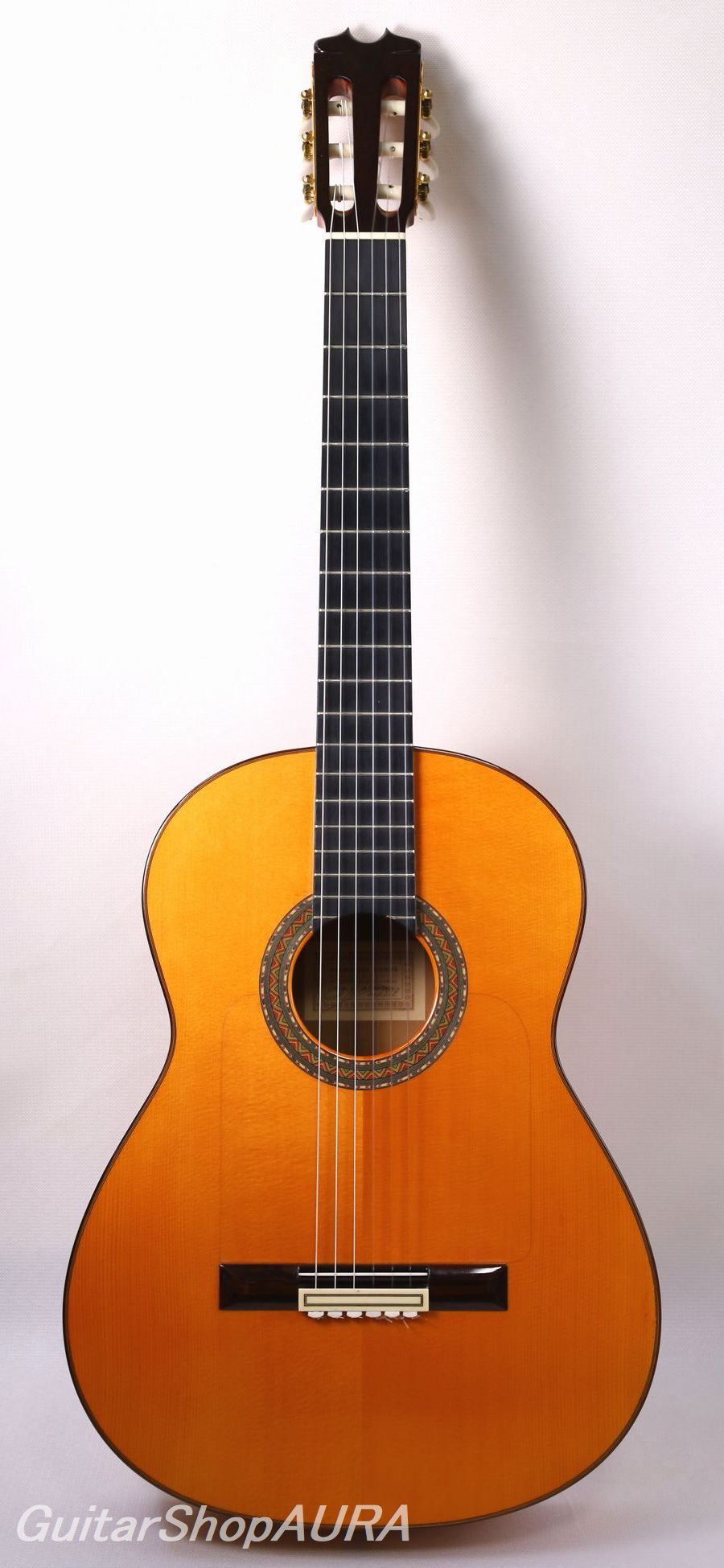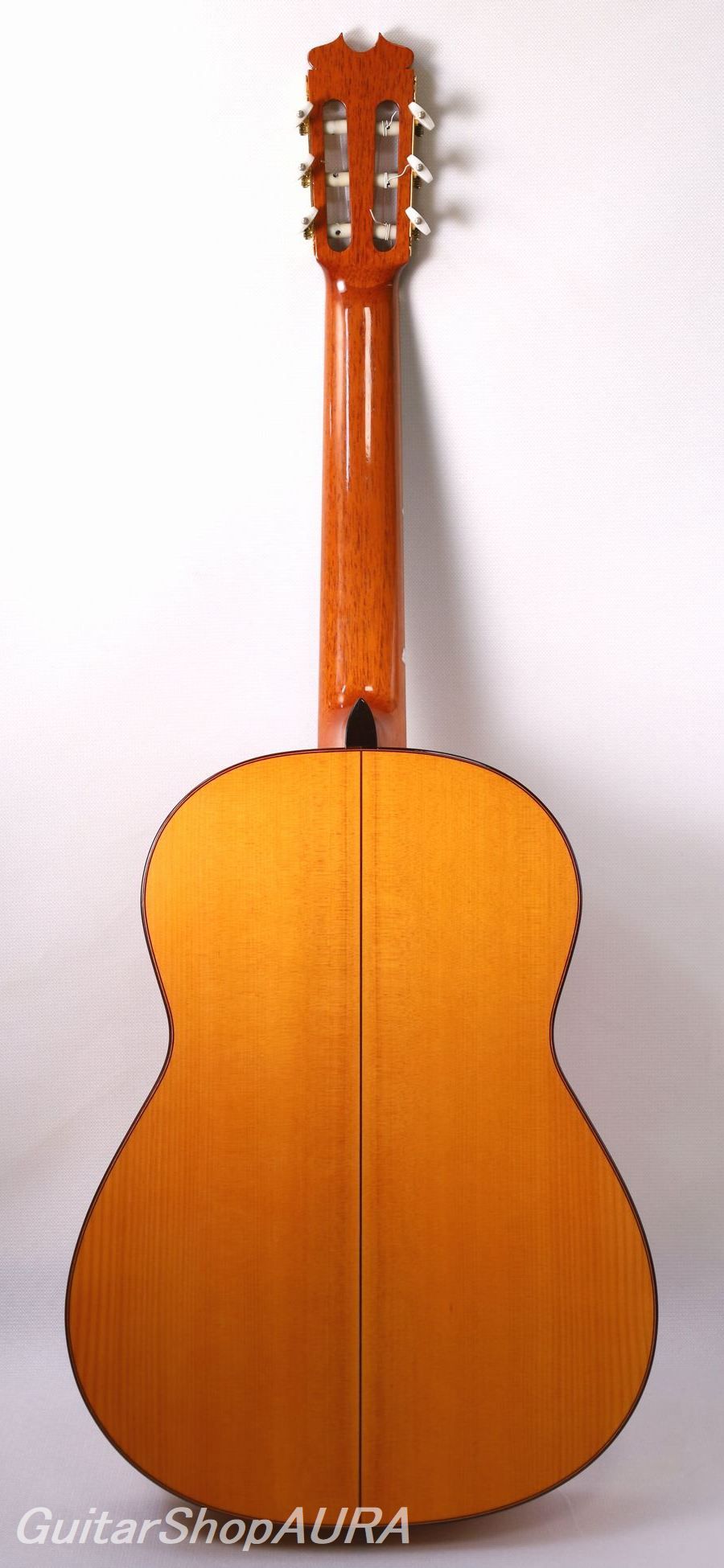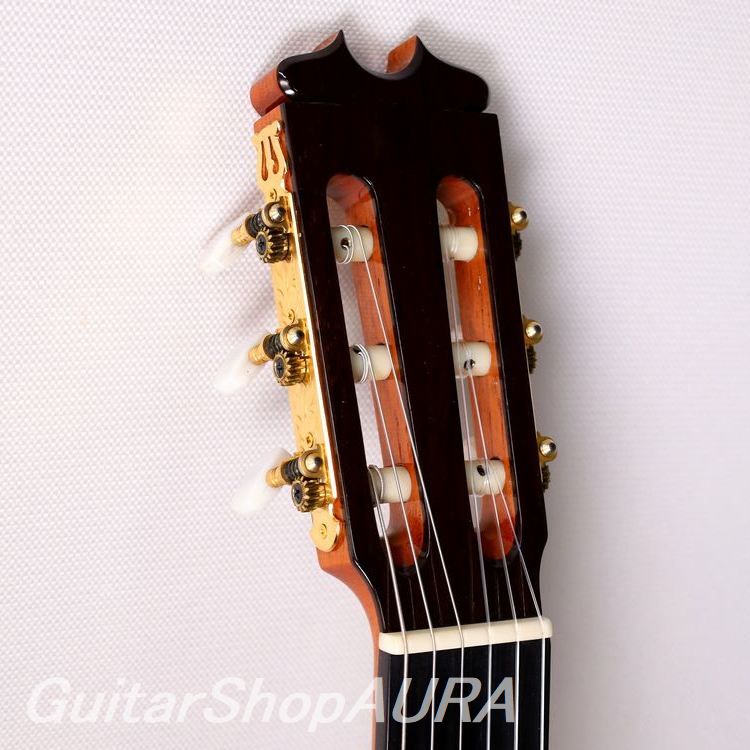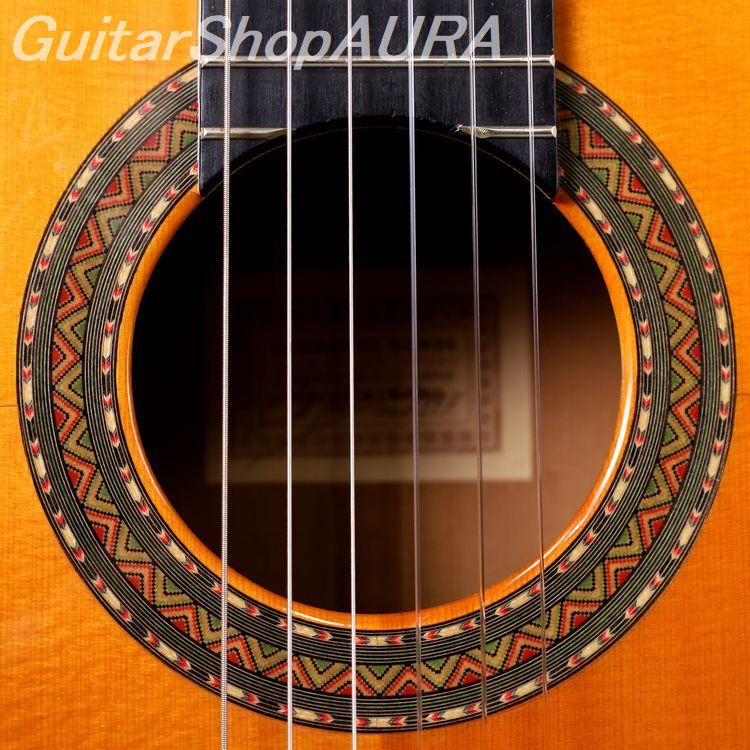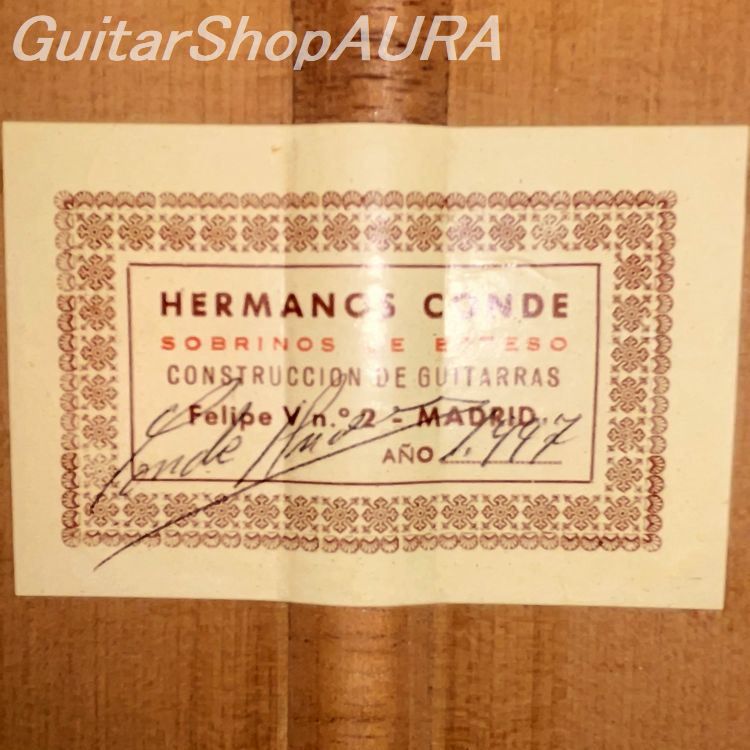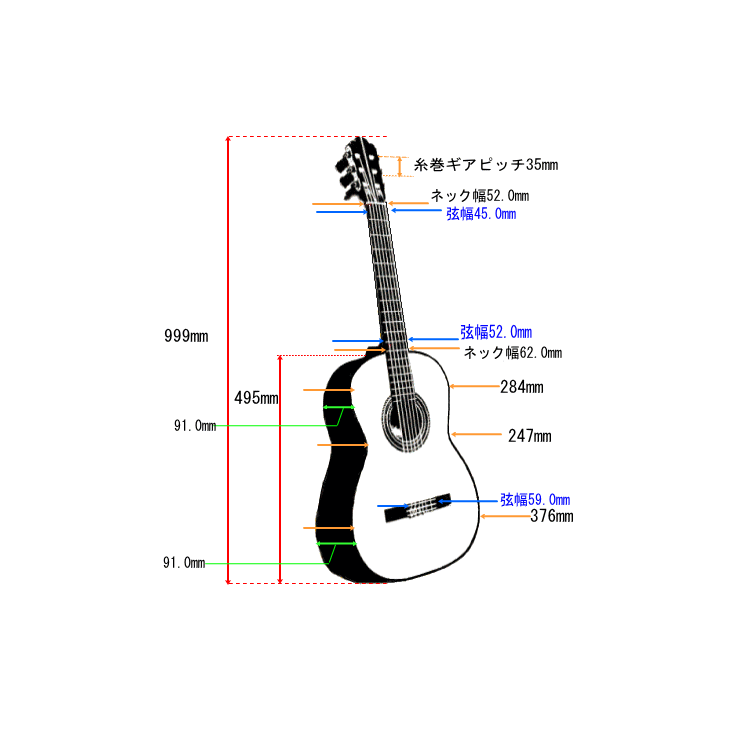Neck: Cedro
Fingerboard: Ebony
Finish(Top): Lacquer
Finish(Back & Sides): Lacquer
Tuning Machines: Fustero
String Height(1st): 2.8mm
String Height(6th): 3.2mm
【Luthier Information】
Among the many renowned flamenco guitar brands of Spain, Conde Hermanos stands as one of the most iconic and enduring names.
The origins of the brand trace back to the legendary Madrid workshop of Manuel Ramírez (1864–1916), where Domingo Esteso (1882–1937) worked alongside Santos Hernández (1874–1943) as a craftsman. In 1919, Esteso opened his own workshop on Gravina Street in Madrid, marking the true beginning of what would become Conde Hermanos.
His nephews — Faustino Conde (1913–1988), Mariano Conde (1916–1989), and Julio Conde (1918–1995) — trained directly under Esteso and later joined his workshop. After Esteso’s death, they continued his legacy under the label “Viuda y Sobrinos de Domingo Esteso” (Widow and Nephews of Domingo Esteso).
When Esteso’s wife, Nicolasa Salamanca — who had handled the finishing of his guitars — passed away in 1959, the label was changed to “Sobrinos de Domingo Esteso / Conde Hermanos”, introducing the now-famous name Conde Hermanos (“the Conde Brothers”).
In the 1960s, the firm completely redesigned their models — from the body structure to the internal bracing — creating their own distinct style. The now-iconic Media Luna (half-moon) headstock, said to be inspired by the shape of a bull’s horn, was introduced as a hallmark of their top models. During this period, the brand gained international recognition and became synonymous with the sound of flamenco.
In 1980, Mariano established a workshop on Calle Felipe V in Madrid, working with his sons Felipe (Felipe Conde I) and Mariano (Mariano Conde II), while still maintaining collaboration with the Gravina workshop. Following Faustino’s passing in 1988, the Felipe V workshop became independent. Mariano I passed away the following year, leaving his sons to continue the work at Felipe V. This workshop became known for its adaptability and stable production, responding effectively to the evolving needs of players and the market.
In 2010, Felipe Conde I and Mariano Conde II each launched their own independent brands — Felipe Conde and Mariano Conde — both preserving the traditions of Conde Hermanos while infusing their own distinctive character and craftsmanship into their guitars.
After Faustino’s death, his widow continued operating the Gravina workshop until the early 2000s, though it is now closed. Julio, who had established the Atocha workshop in the 1950s, was succeeded by his daughter and granddaughter after his passing in 1995. They continue to produce guitars under the Conde Hermanos name today, maintaining the legacy and reputation of the brand.
Conde Hermanos guitars have been famously played by Paco de Lucía and countless other legendary flamenco guitarists. Their instruments remain an essential choice for flamenco players worldwide — a true benchmark of the genre.
【Instrument Information】
Conde Hermanos (Felipe V Workshop) Model A26 – 1997, Used
A representative model of the brand, the A26 features the trademark Media Luna headstock, distinctive aesthetics, and the unmistakable tone that has long defined the sound of modern flamenco.
The internal bracing of the top consists of one harmonic bar above and one below the soundhole, and seven symmetrically arranged fan braces. The central brace extends outward toward the soundhole from the foot block, flanked by two braces that pass through the lower bar and continue up to the upper one. Four additional braces (two on the treble side and two on the bass side) spread downward from the soundhole toward the lower bout, all of which are supported by two closing bars arranged in a shallow “V” pattern.
This configuration — not seen in Domingo Esteso’s original guitars — is characteristic of the high-end Conde models and gives them a uniquely individual structure among Spanish flamenco makers. The resonance of this instrument is set slightly below F♯, which is typical for this model.
This guitar appears to have been lightly played, as indicated by its excellent overall condition and the youthful freshness in its tone. The instrument retains the distinctive bright yet firm, elastic articulation and luminous resonance that are hallmarks of the Conde sound — qualities that will only deepen with time and playing. The response, note separation, and percussive attack are all ideally suited for flamenco performance.
There are no cracks or major repairs. Minor dents and scratches can be seen around the fingerboard edge and golpeador, though they are not visually distracting. A light touch-up is visible on a surface scratch (approx. 5 cm) on the lower treble bout, but it is purely superficial and not structural. The back, sides, and neck are very clean, and both neck and frets remain in excellent condition.
The neck has a slim D-shaped profile with a relatively flat contour, providing a traditional flamenco-style feel. String height is 2.8 mm (1st string) and 3.2 mm (6th string) at the 12th fret, with approximately 1.0 mm saddle reserve remaining.
Equipped with Fustero tuners.
〔detail〕
| Instrument | Conde Hermanos(Felipe) |
| Category | 輸入フラメンコ 中古 |
| Number/Model | A-26 Felipe |
| Scale length | 664mm |
| Country | Spain |
| Year | 1997Year |
| Top | Solid Spruce |
| Side&Back | Solid Cypress |
| Condition※ | 7 |
| List price | 時価 |
| Price (tax included) | お問い合わせ下さい。 |
| option | With Hard case |
